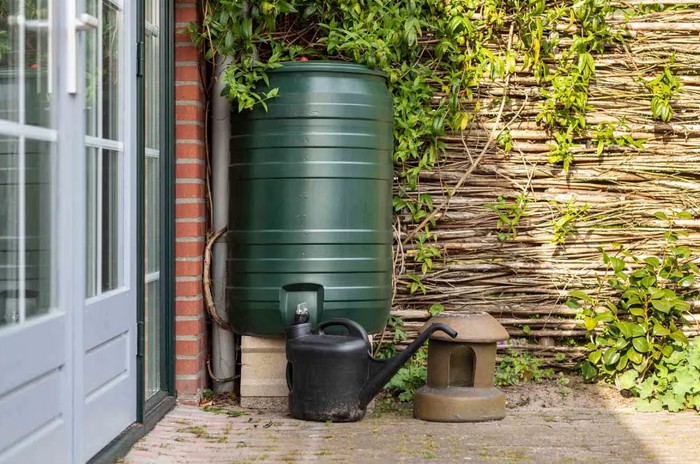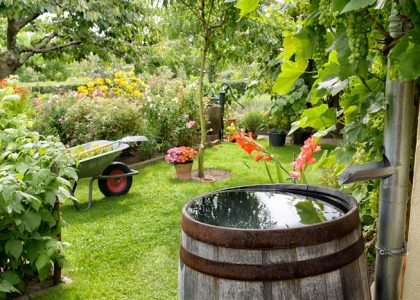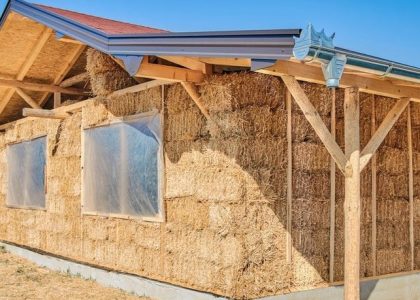
In the quest for a more sustainable lifestyle, homeowners are increasingly turning to eco-friendly practices that reduce reliance on municipal water systems and conserve natural resources. One such practice is the use of rainwater harvesting systems. These systems capture and store rainwater for various uses around the home, particularly in the garden. Not only does rainwater harvesting help conserve potable water, but it can also reduce water bills, promote healthier plant growth, and lessen your environmental footprint. In this article, we’ll explore the benefits of rainwater harvesting systems, how they work, and tips on implementing one in your garden.
1. Understanding Rainwater Harvesting Systems
Rainwater harvesting systems involve collecting, storing, and utilizing rainwater for non-potable purposes like irrigation, landscaping, and even flushing toilets. These systems are highly efficient, eco-friendly, and versatile, making them an ideal solution for homeowners who want to reduce water consumption while nurturing their gardens. Rainwater is often considered “soft water,” meaning it has low levels of salts and minerals compared to tap water, making it particularly beneficial for plants.
How Do Rainwater Harvesting Systems Work?
At their core, rainwater harvesting systems consist of a few key components: collection surfaces (typically roofs), gutters, downspouts, storage tanks, and filtration systems. Here’s how each part works:
- Collection: Rainwater is collected from the roof of your house or another structure. Gutter systems direct the rainwater into downspouts, where it flows into storage tanks.
- Storage: The collected rainwater is stored in a tank, barrel, or other container. Depending on the size of your system, storage containers can range from small rain barrels to large underground tanks.
- Filtration: Before the water is used, it often passes through a filtration system to remove debris, leaves, and other contaminants. This step is crucial for ensuring that the water is clean and safe to use for irrigation.
- Distribution: Once filtered, the rainwater can be pumped into irrigation systems, drip lines, or used to water plants manually.
2. Benefits of Rainwater Harvesting Systems for Your Garden
There are numerous advantages to installing rainwater harvesting systems in your garden. These benefits not only support the environment but also offer practical solutions for sustainable gardening.
1. Conserves Drinking Water
By capturing rainwater, you reduce your reliance on tap water, which is typically sourced from freshwater reservoirs or groundwater. Freshwater is a limited resource, and by using rainwater for your garden, you help conserve potable water for more critical uses such as drinking and cooking.
- Benefit Tip: In many areas, local governments encourage rainwater harvesting by offering tax incentives, rebates, or subsidies to homeowners who install these systems, making it a financially viable choice.
2. Reduces Water Bills
One of the most immediate benefits of rainwater harvesting systems is the reduction in water bills. Gardening and landscaping often require significant water use, especially during dry spells. By relying on rainwater for irrigation, you can reduce your dependence on municipal water, thus saving money on your water bills.
- Cost-Saving Tip: If you’re using rainwater for irrigation, you can install a simple drip irrigation system that ensures your plants get just the right amount of water, minimizing waste.
3. Promotes Healthier Plants
Rainwater is naturally soft, which means it lacks the salts and chemicals typically found in tap water, such as chlorine and fluoride. These chemicals can sometimes damage plants over time, leading to yellowing leaves, poor growth, and soil degradation. Using rainwater helps to provide your garden with nutrient-rich, chemical-free water, promoting healthier plants, lawns, and crops.
- Plant Care Tip: Plants thrive on the natural nutrients found in rainwater. This can lead to improved growth, stronger root systems, and better resistance to drought conditions.
4. Helps Combat Drought Conditions
In regions that face droughts or water restrictions, rainwater harvesting systems are an excellent way to maintain healthy gardens without putting additional strain on public water supplies. Harvested rainwater can be stored during rainy periods and used when dry weather hits, ensuring that your plants remain well-watered and your garden stays lush and green.
- Drought Prevention Tip: Consider installing a larger storage tank if you live in an area prone to drought. This allows you to capture more rainwater and store it for longer periods, ensuring your plants have enough water during the dry months.
5. Eco-Friendly and Sustainable
Implementing rainwater harvesting systems is a sustainable practice that directly benefits the environment. By using rainwater instead of relying on chemically treated municipal water, you reduce the energy needed to treat and pump water to your home. Additionally, harvesting rainwater reduces stormwater runoff, which helps prevent water pollution and erosion.
- Environmental Tip: Rainwater harvesting can help you lower your carbon footprint by using a renewable resource—rain—rather than relying on energy-intensive methods to supply water to your garden.
3. How to Set Up a Rainwater Harvesting System for Your Garden
Setting up a rainwater harvesting system in your garden doesn’t have to be complicated or expensive. There are a variety of ways to install a system depending on your space, budget, and needs. Here are some simple steps to get started:
1. Choose the Right Collection Surface
The first step is selecting a collection surface for the rainwater. Most homeowners use their roof, as it provides the largest surface area. However, it’s important to ensure that your roof is free from contaminants, such as bird droppings or pollutants, to ensure the quality of the harvested water.
- Surface Tip: If you live in an area with heavy rainfall, you might want to install a larger or multiple collection tanks to ensure you capture enough water.
2. Install Gutters and Downspouts
To direct the rainwater from the roof into your storage tank, you’ll need a properly installed gutter system. Ensure that gutters are clean and free from leaves and debris to prevent clogging.
- Installation Tip: Using a first flush diverter can ensure that the initial rainwater, which may contain roof debris, is diverted away from the storage tank.
3. Select a Storage Tank
The size of your storage tank will depend on the amount of rainfall you typically receive and how much water your garden requires. Rain barrels are a good option for smaller gardens, while larger tanks (up to several thousand gallons) may be more appropriate for larger properties.
- Tank Tip: Ensure the tank is made of durable, UV-resistant material to prevent algae growth. Additionally, choose a tank with a secure lid to keep out insects and debris.
4. Install Filtration and Distribution Systems
To ensure the rainwater is clean and safe for your plants, install a simple filtration system. A mesh screen over the top of the tank will help keep debris out, while a finer filter can remove smaller particles.
- Distribution Tip: Once the water is stored, you can use hoses, drip irrigation, or soaker hoses to distribute it to your plants. Consider automating the system with a timer to ensure that your garden gets the right amount of water at the right time.
Incorporating rainwater harvesting systems into your garden is an excellent way to conserve water, reduce your environmental impact, and nurture a healthier, more sustainable landscape. With the right setup, you can enjoy the benefits of free, chemical-free irrigation that supports your garden’s growth and reduces water costs. Whether you’re looking to save money, conserve natural resources, or simply make your garden more resilient, a rainwater harvesting system offers a practical and sustainable solution for your outdoor space.




